Menus
- First for yourself, then for the whole world
- Metisse machines go from one success to the next
- Rickman Metisse Mk3
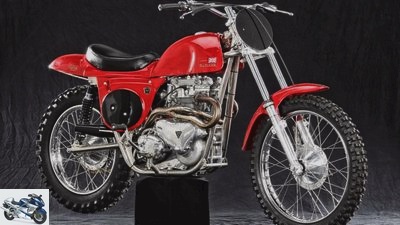
Bilski
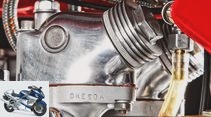
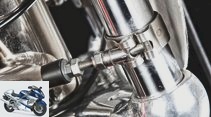
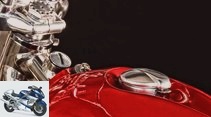
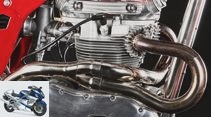
10 photos
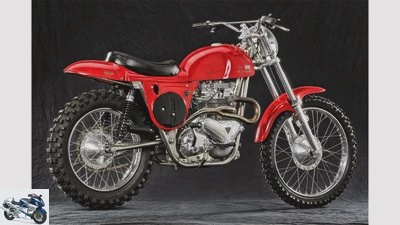
Bilski
1/10
With their Metisse, the Rickman brothers conquered the cross slopes of the world in the early 1960s and laid the foundation for a story that continues to this day.
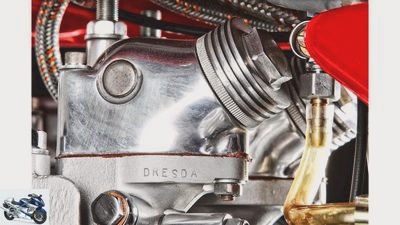
Bilski
2/10
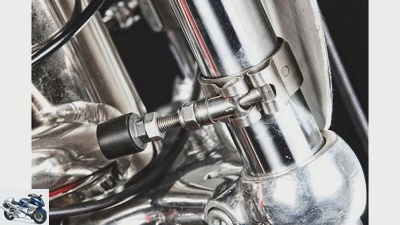
Bilski
3/10
Very British: the finest steel tube, brazed and nickel-plated.
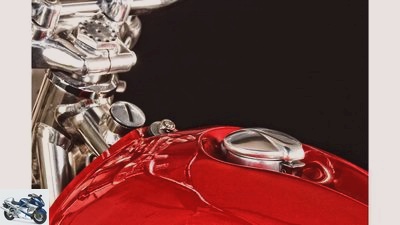
Bilski
4/10
The tank is made of light, fiberglass-reinforced plastic; the filler neck for the engine oil is behind the steering head. The frame serves as an oil reservoir. This saves the oil tank and thus weight, and it keeps the oil temperature low.
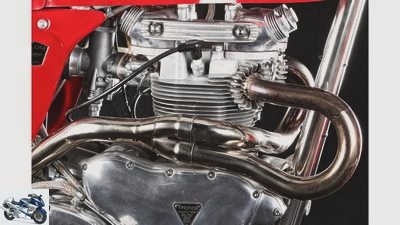
Bilski
5/10
… In off-road racing, tried-and-tested pre-unit engines were used in conjunction with Norton or BSA transmissions even later.
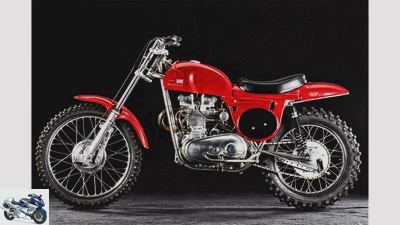
Bilski
6/10
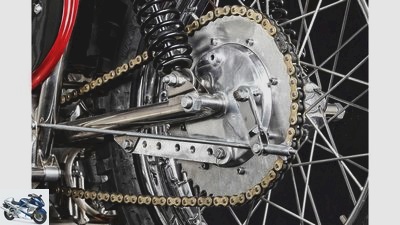
Bilski
7/10
Even if Triumph unit engines were already available from 1960, …
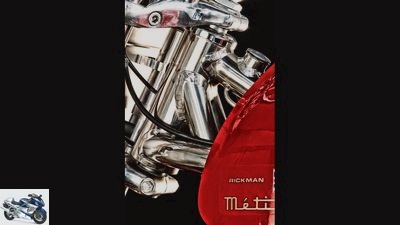
Bilski
8/10
… made of solid Reynolds tubing.
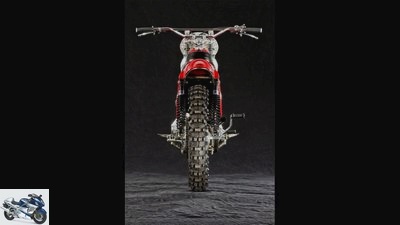
Bilski
9/10
Because the road frames bent or broke, the Rickman brothers developed a real off-road chassis …
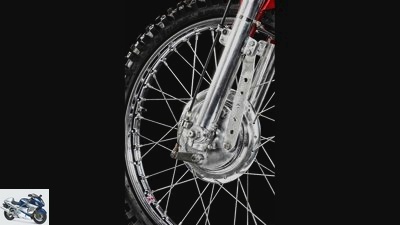
Bilski
10/10
Motocross machine Rickman Metisse
First for yourself, then for the whole world
Content of
With their Metisse, the Rickman brothers conquered the cross slopes of the world in the early 1960s and laid the foundation for a story that continues to this day. As this MRD Metisse Triumph shows: built in the 90s – and still an original.
M.Under-age, money-thin teenage professionals whip and scrub their 100 kilo 250cc factory machines using tricky jump combinations, earning millions of euros with them, and fat articulated trucks are lined up in the paddock for workshops and hospitality. This is what motocross looks like today. But it was completely different when it all began. And that was in the mid-1950s. Back then, flawless amateurs, who at best had their motorbikes provided, drove on slightly modified road machines over hilly natural slopes. In England they called it “Scramble”. The drivers were still real men, well built, and of course they went to work every Monday.
Buy complete article
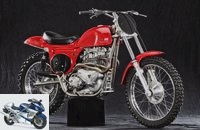
Motocross machine Rickman Metisse
First for yourself, then for the whole world
Frame as an oil reservoir
Two extremely talented pilots of their time were the Rickman brothers, whose mother continued to run the auto repair shop after the early death of their father immediately after the end of the war, until they founded their small motorcycle workshop in New Milton near Southampton in 1958. Don and Derek had made a name for themselves in off-road racing since the early 1950s. In 1958, both drove the 500cc BSA Gold Star, heavy single-cylinder road machines whose frames regularly bent or broke in tough scramble races. At the same time, Swedes appeared at international races with very special Monark or Crescent prototypes, lighter, more agile and more robust.
Don and Derek quickly realized that something had to happen. The following winter they assembled their first machine of their own, powered by a Triumph Preunit engine that was inserted into a converted BSA chassis. The gearbox also came from the BSA, the fork from Norton. For the first time they used the frame as an oil reservoir.
The TriBSA caused a sensation in the spring races of 1959. In the race at Bulbarrow Hill, Derek dominated his runs in a superior manner. On the way back, the Rickmans took a tea break as usual with their oil sponsor Harold Wakefield in Ferndown, who asked what they wanted to call their machine. “Mongrel,” they answered, a promenade mix, a bastard. But that sounded too negative to them. You leafed through a French dictionary and found the translation “Metis”, finally choosing the feminine form “Metisse”. That seemed appropriate to the brothers.
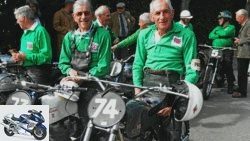
Sports & scene
The Rickman brothers on the revolutionary Metisse
Revolutionary in-house development
read more
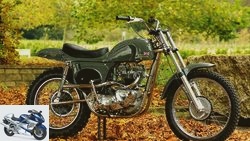
classic
Metisse Triumph Steve McQueen Replica
McQueen’s Desert Racer is being built again
read more
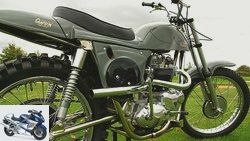
motorcycles
Metisse Desert Racer
Steve McQueen’s bike
read more
Impression Rickman Metisse Triumph T 150 V
The right framework
read more
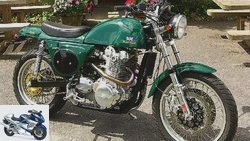
Modern Classic
Driving report Metisse 8V Mark 5
Twin shock
read more
Metisse machines go from one success to the next
The two Metisse machines then drove from one success to the next. The highlight of the season was the overall victory for Don Rickman at the Cross of Nations in 1959 in Namur, Belgium. With this experience, the Mk2 with a plastic-clad air filter box was created the following winter as a novelty, which the brothers had a plastics expert manufacture. This resulted for the first time in the typical Metisse outfit with the distinctive rear fairing, which caused a sensation in the spring of 1960.
Bilski
Because the road frames bent or broke, the Rickman brothers developed a real off-road chassis made of solid Reynolds tubing.
The Mk2 was used extremely successfully by the two Rickman brothers in 1960 and 1961, but only four machines were built. And in the base it was still TriBSA. Meanwhile, however, the plans for really own motorcycles were already maturing in the minds. These were implemented in secret in the winter of 1961/62 when the revolutionary Mk3 was created. The Rickmans had previously obtained detailed advice from the pipe supplier Reynolds regarding the processing of the legendary pipe 531.
With the nickel-plated pipes and the spectacular plastic cladding, the Metisse MK3 was a sensation. And Don won at the first appearance in 1962, of all places, before the works BSA under Jeff Smith and Dave Bickers. What the brothers did not yet suspect: At that moment their lives changed dramatically. Until then, they had always built their machines for themselves, but suddenly the whole world wanted a Metisse. Within a very short time, the Rickman brothers became real motorcycle manufacturers and built up a small factory in a hurry. The rest is history: the Metisse Mk3 hurried from success to success. After all, half the field of drivers in the cross-country championship drove with the robust frames in which single and twin cylinders from Triumph, Matchless, BSA or AJS were used.
But at the end of the 1960s, the era of the dinosaurs was over, agile two-stroke engines finally took over the helm. The Rickmans sold their company, but then the famous frame kits continued to be produced, by Adrian Moss under Rickman Motorcycles and Pat French under MRD Metisse, later Metisse Motorcycles. So the dream of such a gem can still be realized today.
Rickman Metisse Mk3
Engine: Triumph Tiger 100 pre-unit twin, bore 63.0 mm, stroke 80.0 mm, 498 cm³, compression 10: 1, two valves per cylinder, approx. 45 hp at 7000 / min, an Amal round slide carburetor, oil bath clutch, Norton four-speed gearbox, chain drive
Landing gear: MRD Metisse Mk3 frame made of brazed 4130-Cro-Mo steel tubes, oil in the frame, Ceriani fork at the front, two-arm swing arm at the rear, drum brakes at the front and rear, dry weight 127 kg, tank capacity 9 l
Contact: www.metisse-motorcycles.com
Related articles
-
First driving report of the Kawasaki GPZ 900 R (MOTORRAD 1-1984)
Archive 26 pictures Archive 1/26 Light, strong and fast was the formula for the Kawasaki superbike of the 1980s, the GP Z 900 R. Archive 2/26 According to …
-
KTM Target 320 MOTORRAD self-made
Jahn 25 pictures Jahn 1/25 The narrow paneling with a small light shaft between the spoilers characterizes the front view of the sports version. Jahn 2/25 brake …
-
Driving report Metisse 8V Mark 5
Nakamura driving report Metisse 8V Mark 5 Twin-Shock Shocking! A Rickman Metisse all in green, with a tubular steel frame and two spring struts – but with a new …
-
MOTORRAD Podcast Curve Discussion Episode 3: E-Motorcycles in Everyday Life
Tyson Jopson MOTORCYCLE Podcast Curve Discussion Episode 3 E-motorcycles in everyday life Not exactly the most popular topic among motorcyclists, but simple …
-
BMW Motorrad Vision DC Roadster: E-motorcycle with a boxer look
Motorcycle fair in Milan EICMA 2019 Presented by BMW Motorrad 16 pictures BMW Motorrad 1/16 batteries and cooling system are installed on the Vision DC Roadster …
-
Suzuki Motorrad Bandit 1250 from 2009 – Technical data
Suzuki Motorrad Bandit 1250 Technical data from 2009 Technical data Engine Number of cylinders, type 4, in-line engine Power 72.0 kW / 97.9 PS at 7,500 …
-
Suzuki Motorrad Bandit 1250 from 2012 – Technical data
Suzuki Motorrad Bandit 1250 Technical data from 2012 Technical data Engine Number of cylinders, type 4, in-line engine Power 72.0 kW / 97.9 PS at 7,500 …
-
Suzuki Motorrad Bandit 1250 S from 2009 – Technical data
Suzuki Motorrad Bandit 1250 S Technical data from 2009 Technical data Engine Number of cylinders, type 4, in-line engine Power 72.0 kW / 97.9 PS at 7,500 …
-
BMW Motorrad F 800 R from 2013 – Technical data
BMW Motorrad F 800 R technical data from 2013 technical data engine Number of cylinders, type 2, in-line engine, output 64.0 kW / 87.0 PS at 8,000 rpm …
-
BMW Motorrad F 800 R from 2011 – Technical data
BMW Motorrad F 800 R Technical data from 2011 Technical data Engine Number of cylinders, type 2, in-line engine, output 64.0 kW / 87.0 PS at 8,000 rpm …